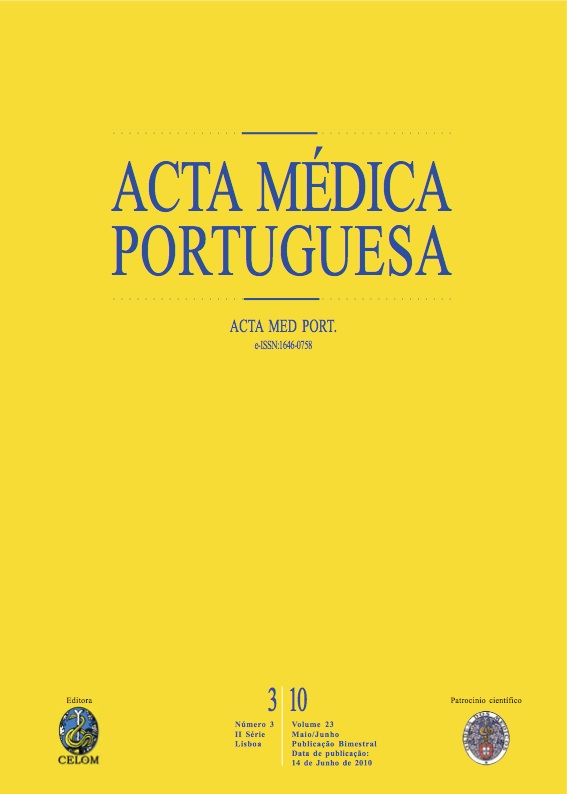Prevalência de inadequação nutricional em crianças portuguesas.
DOI:
https://doi.org/10.20344/amp.645Resumo
Obesity is one of the most serious health problems in children, and it's frequently related to low activity levels and inadequate nutrition. To evaluate the prevalence of nutritional inadequacy a total of 4845 children (2445 girls and 2400 boys) aged 7-9 years old, were observed. Height and weight were measured according to international standards, and body mass index (BMI) was calculated. Overweight and obesity, using age- and sex-specific BMI cut-off points as defined by the International Obesity Taskforce, were used. Children's dietary intake was measured using a 24-h dietary recall by trained researchers. To evaluate nutritional inadequacy, Food and Nutrition Board Dietary Reference Intakes and World Health Organization (WHO) recommended intake goals were used. The prevalence of overweight/obesity in this sample was 30.8% and the proportion of children with an intake below the Estimated Average Intake/Adequate Intake was very low (= 10%) for the following nutrients: vitamins A, B1, B2, B6, B12, and PP; and for magnesium, zinc, iodine, phosphorous, selenium, and iron. High prevalences of inadequacy were found for folate (60.5% in girls and 54.6% in boys), vitamin E (63.9% in girls and 59.5% in boys), calcium (45% in girls and 40.7% in boys), molybdenum (89.7% in girls and 87.4% in boys, and fibre (87.8% in girls and 86.7% in boys). Regarding the macronutrients, 65.9% and 78.8% of the individuals were above WHO recommended intake values for protein and total fats, respectively; 22% didn't ingest lower than WHO carbohydrates intake recommendation. We've also found that 81.4% and 97.3% of the individuals were above WHO recommendations for saturated fatty acids and total sugars, respectively. Regarding cholesterol intake, 53% of the individuals ingested more than the recommended by WHO. In conclusion, the prevalence of inadequate intakes of calcium, vitamin E, folate, molybdenum and fibre was unacceptably high, while and the contribution of total fat, saturated fat and sugars were far above the recommended by WHO. This could be associated to major chronic diseases, such as coronary heart diseases, in later life.Downloads
Downloads
Como Citar
Edição
Secção
Licença
Todos os artigos publicados na AMP são de acesso aberto e cumprem os requisitos das agências de financiamento ou instituições académicas. Relativamente à utilização por terceiros a AMP rege-se pelos termos da licença Creative Commons ‘Atribuição – Uso Não-Comercial – (CC-BY-NC)’.
É da responsabilidade do autor obter permissão para reproduzir figuras, tabelas, etc., de outras publicações. Após a aceitação de um artigo, os autores serão convidados a preencher uma “Declaração de Responsabilidade Autoral e Partilha de Direitos de Autor “(http://www.actamedicaportuguesa.com/info/AMP-NormasPublicacao.pdf) e a “Declaração de Potenciais Conflitos de Interesse” (http://www.icmje.org/conflicts-of-interest) do ICMJE. Será enviado um e-mail ao autor correspondente, confirmando a receção do manuscrito.
Após a publicação, os autores ficam autorizados a disponibilizar os seus artigos em repositórios das suas instituições de origem, desde que mencionem sempre onde foram publicados e de acordo com a licença Creative Commons









